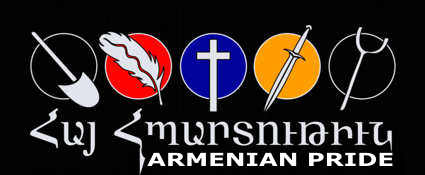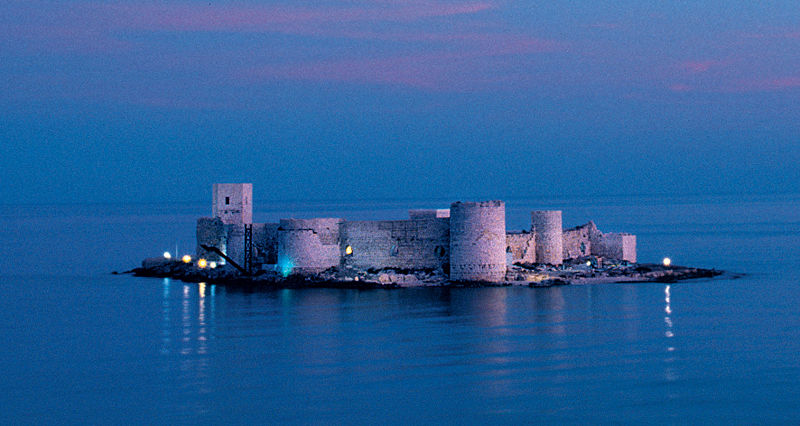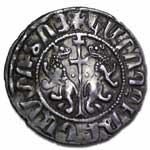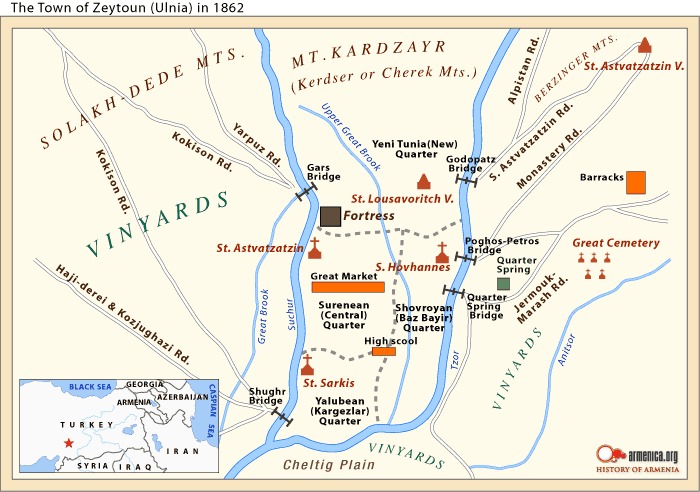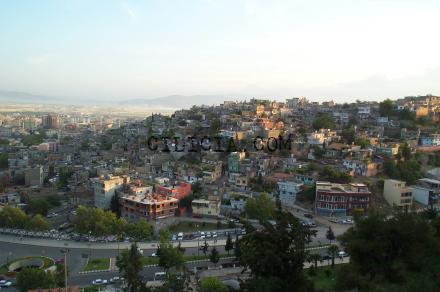Cilicia
From Armeniapedia.org
An independent Armenian Kingdom during the early second millenium, the Armenian presence in this Mediterranean coast region had a large Armenian population until the Armenian Genocide and the final expulsion of Armenians by the forces of Mustafa Kemal Atatürk.
One of the greatest achievements that the Cilician Armenians had reached was the master craft of castle building, based upon the rich tradition of previous periods in Armenian history. The Crusaders acquired techniques of building round-shaped castles [previously to Crusade epoch most of the castles in Europe were square-shaped], for the most part advanced castle building in Europe began in the late Medieval period, in this respect the Cilician castles remain the best manifestations of the given time period in the XIth, XIIth and XIIIth centuries. The strategic selection of castle building in of itself is very complex and amazing. The castle, visible from miles away, represented the center and the power of the sovereign lord of the second estate [nobles, barons, viceroys, dukes] of the monarchial hierarchy, his right of holding of the domain, a fief granted personally by the orders of the King himself for the duties and tasks accomplished in the name of the king and country. Natural obstacles like rocky terrain unrelenting cliffs; canyons guarded most of the castles, while rivers and lakes served as excellent obstacles in terms of natural moat entrenchment. The enormous and complex castles of the Kingdom of Cilician Armenia are one of the greatest and distinguished highpoint attainments in the history of Cilician Armenia.
One of the primary ports was Ayas. Ayas became an important harbour city of the Armenian Kingdom of Cilicia in the second half of the 13th, when with the fall of Acre and the silting up of the harbor of Tarsus, it became the center of trade between the West and the East, benefitting from its good roads east. Marco Polo disembarked here to begin his trip to China in 1271.
Ayas passed between the Mamluks and the Armenians several times in the 13th and 14th centuries, and was definitively taken by the Mamluks in 1347. Under the Ottomans, it was a kaza in the eyalet of Adana.

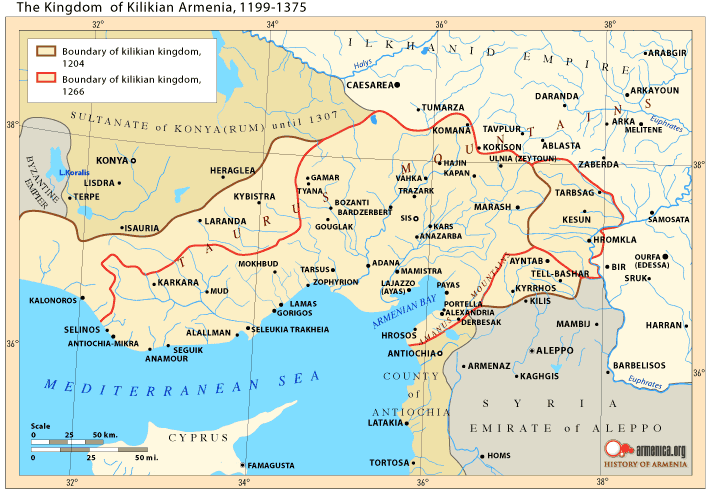
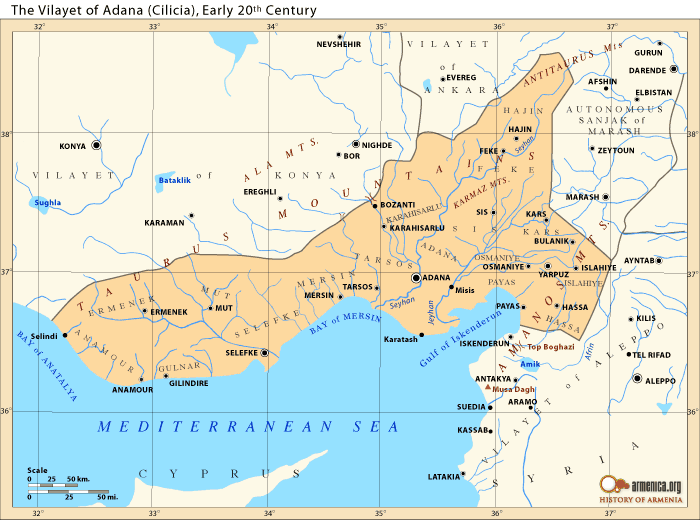
Rediscovering Armenia Guidebook- Cilicia
The road from Gesaria to Cilicia crosses the Taurus Mountain Chain at a pass called the "Cilician Gates". Cilicia was the last Armenian kingdom, and a crusader ally state. It fell in ?. It remained a large center for Armenians until the genocide and its aftermath. After the genocidal massacres and deportations, the area was included as part of Syria and a French Cilician mandate. The forces of Mustafa Kemal attacked and while the French negotiated a retreat for themselves, the Armenians fought, and in Marash and Aintab defeated the Turks. French diplomacy annulled these victories and the Armenians were forced to leave once again, with those in Marash and Aintab being massacred one last time mercilessly as revenge. The new names of Marash (Kahramanmarash - "Heroic Marash"), Urfa (Shanliurfa - "Glorious Urfa") and Aintab (Gaziantep - "Victorious Aintab") were changed by the Turks after taking the cities, though the new names do not reflect what actually happened.
|
Marash
(Now
known
as
Kahraman-marash)
is a
city
now
in
Turkey
and
called
Kahraman-Marash.
It
was
also
known
as
Andiok,
Andiok
Giligio
General view of Marash. Copyright (c) 2004, Raffi Kojian, |
 view of Marash. Copyright (c) 2004, Raffi Kojian. |
|
Gesaria
(Now
known
as
Kayseri)
Gesaria, also frequently transliterated as Gessaria, now known in Turkey as Kayseri. An Armenian Church reopened in recent years, though there are no Armenians left.
|
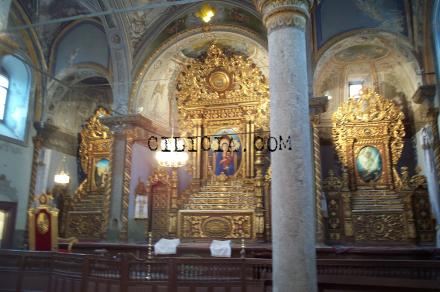 |
Hajin (Now known as Saimbeyli)
Hajin always maintained autonomy from the Ottoman Empire. In 1920, the Armenians of Hajin resisted a seige by Kemalist troops for eight months without any help from the outside. Only a handful of Armenians survived this seige, and the Turks renamed the city Saimbeyli in tribute to Sayib Bey, who was one of those responsible for this destruction of Armenians.
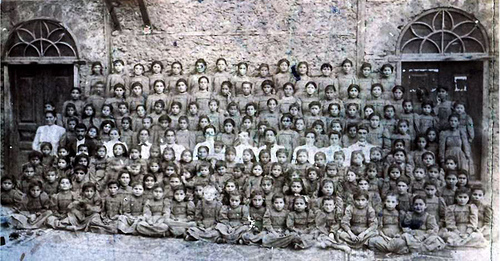 In 1909 there was a massacre 30,000 Armenians at Adana which resulted in a great many orphans. Here we see the girls orphanage that was established at Hadjin. The staff is in the fifth row most of whom are wearing white. Included are Mennon Brethren Missionaries Sister Rose Lambert, Fredericka Tonk, and Sister Ida Tschumi |
Adana,
the
name
of
both
a
city
and
a
provice,
is
located
in
historic
Cilicia,
now
in
Turkey,
and
before
the
Armenian
Genocide
had
a
large
Armenian
population.
The city of Adana or in Western Armenian, Atana also known as Atan, Atanah, Atania, Andiokis ar Sarosiv. At the beginning of the 20th century the city had a population of 45,000, of which 13,000 were Armenian. Today's population is over 300,000, primarily Turks. |
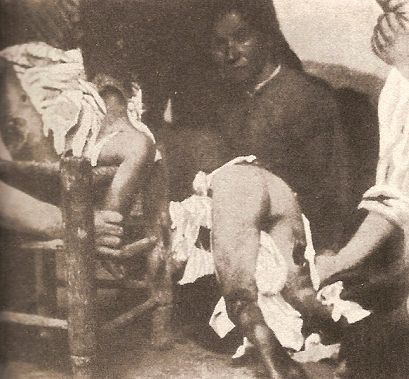 Adana
massacres,
April
1909:
"Armenian
children
whose
flesh
was
ripped
off
with
cotton-chopping
tools
and
whose
knee
tendons
were
severed,"
Adana
massacres,
April
1909:
"Armenian
children
whose
flesh
was
ripped
off
with
cotton-chopping
tools
and
whose
knee
tendons
were
severed," |
Musa Dagh
The resistance of the Armenians in Musa Dagh was legendary, captured in the famous fictional international bestseller by Franz Werfel, "The Forty Days of Musa Dagh". The actual resistance in fact lasted 53 days, until French ships unexpectedly arrived and rescued the survivors. Today, just one tiny Armenian village survives on this mountain, in fact the only Armenian village remaining in all of Turkey.
The true events are the inhabitants of six villages on the slopes of Musa Dagh, chose to resist in 1915 and set up fortifications on the mountain. For 53 days they repelled onslaughts by Turkish troops until French sailors sighted a banner the Armenians had tied to a tree on the mountain emblazoned with the words: “Christians in Distress: Rescue.” French and British naval ships then evacuated some 4,200 men, women and children from Musa Dagh to Port Said in Egypt. From there groups of these refugees settled in different places, and many returned after WWI, only to leave permanently in 1939 when this area was transferred from Syria to Turkey. Today, only the tiny village of Vakifli remains Armenian on Musa Ler. In fact, this is the only Christian Armenian village left anywhere in Turkey.
Many of those who were resettled after the handover to the Turks, were moved to Anjar village in Lebanon. This village remains almost wholly Armenian today. Others settled in Musa Ler Village in Armenia, just minutes west of Yerevan. There is a memorial built in the village, and each year 40 huge pots of Harisa
( is traditional Armenian dish, with grains and meat).are cooked on the anniversary of the escape to celebrate, and shared free with any visitors to their village.Sis (Now known as Kozan)
Sis was the seat of the Catholicossate of Cilicia. When Sis fell to the Turks, the Catholicossate moved to Antelias, in Lebanon, following many of the Armenian refugees from the area.
Aintab (Now known as Gaziantep)
On the fringes of Cilicia lies Gaziantep (W Arm: Aintab). Gaziantep had an Armenian Church called St. Mary's. St. Mary's Church was converted into a prison for a period, before being turned into Kurtulus Mosque.
Urfa (Now known as Şhanliurfa)
Fortress of Hromkla
Virtually the only remaining Armenian monument in Cilicia after the invasion by Mustafa Kemal's Republican forces is the Hromkla Fortress, overlooking the Euphrates River. The name Hromkla is Arabic for "the Fortress of the Romans" (actually referring to the Byzantines). The Turks call it "Rumkale", a name with the same etymology.
Hromkla was an Armenian pricipality of sorts for a century and half, which was ruled by the Catholicossate, and was completely surrounded by Muslim territory. Heads of the Armenian Church undertook religious, political, diplomatic, literary and artistic activities.
Nerses Shnorhali was coadjutor to his brother from 1113-1166, then Catholicos himself until 1173 when he died. Toros Roslin worked here in the second half of the XIIIth century. Roslin is considered by most to be the best ever painter of illuminated manuscripts.
The fortress is also where the reliquary of Skevra - one of the finest examples of Armenian goldsmith art - was made. It was lost for centuries before being rediscovered in Italy in the XIXth century and is now at the Hermitage in St. Petersburg. The Catholicossate moved from here to Sis.
Rediscovering Armenia Guidebook- Cilicia
Category: Armenian History


